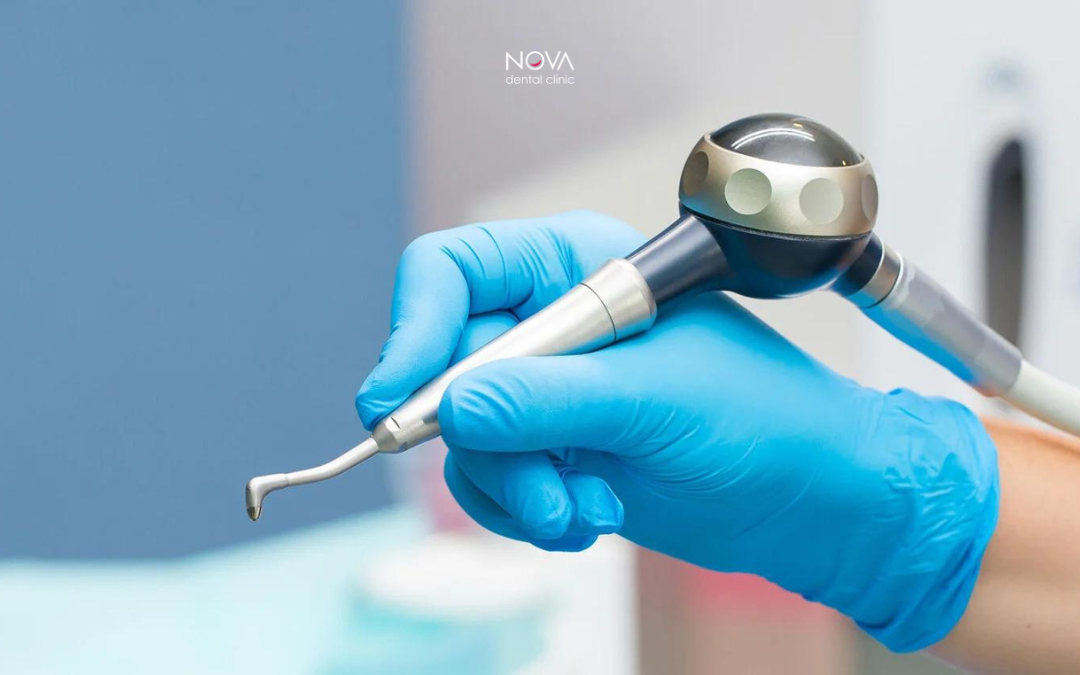Have you ever felt a tooth erupting, even though you’re no longer a child?
Wisdom teeth are the last teeth to erupt in the oral cavity. They earned their name because they typically emerge between the ages of 17 and 25, a period once considered the age of maturity and wisdom.
Due to frequent inquiries from patients about whether wisdom teeth extraction is necessary and how to ease the discomfort they cause during eruption, today’s blog focuses on these interesting yet “stubborn” teeth!
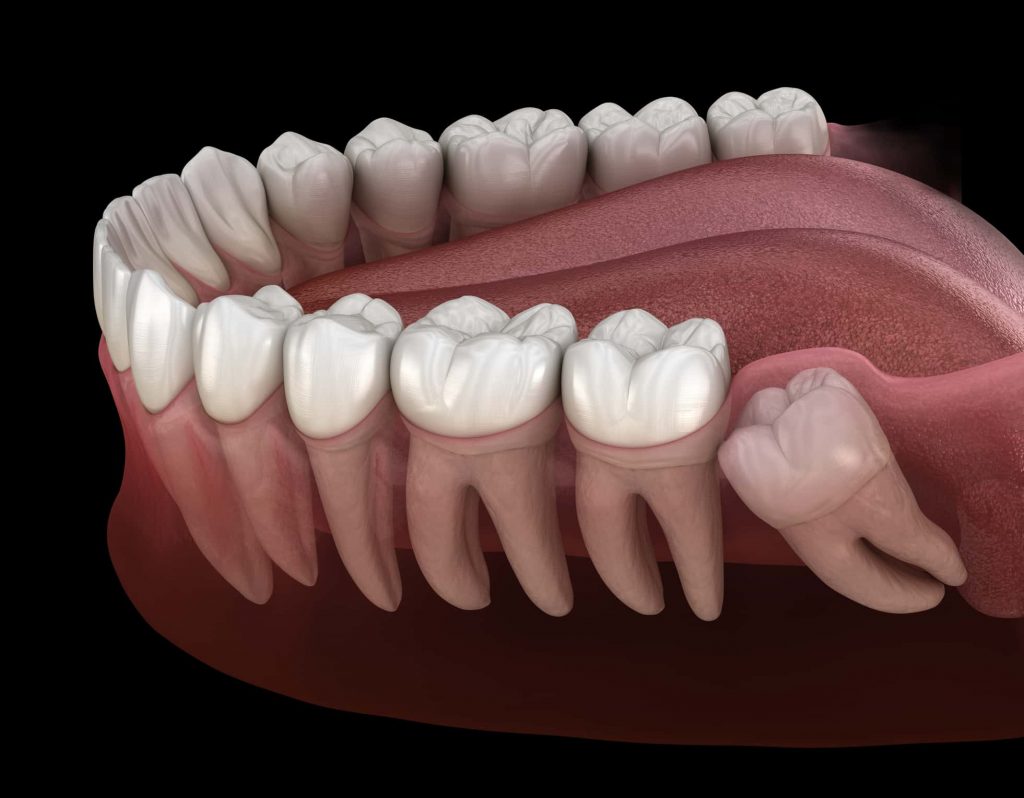
What types of wisdom tooth eruptions are there?
Given that in ancient times humans consumed raw and tough food, three molars on each side of the jaws were essential for easier chewing. Today, over one-third of the population lacks wisdom teeth, a phenomenon attributed to the evolution of modern humans and a diet consisting of thermally well-prepared and liquid food.
In some people, there isn’t even a bud for these teeth. For many, the bud exists but remains “stuck” in the jaw, preventing the tooth from erupting. In such cases, we say the wisdom teeth are “impacted.” On the other hand, 85% of erupted wisdom teeth require extraction due to improper positioning. Often, these teeth only partially erupt, earning them the label “partially impacted.” Rarely, wisdom teeth fully erupt, completing the set of 32 permanent teeth.
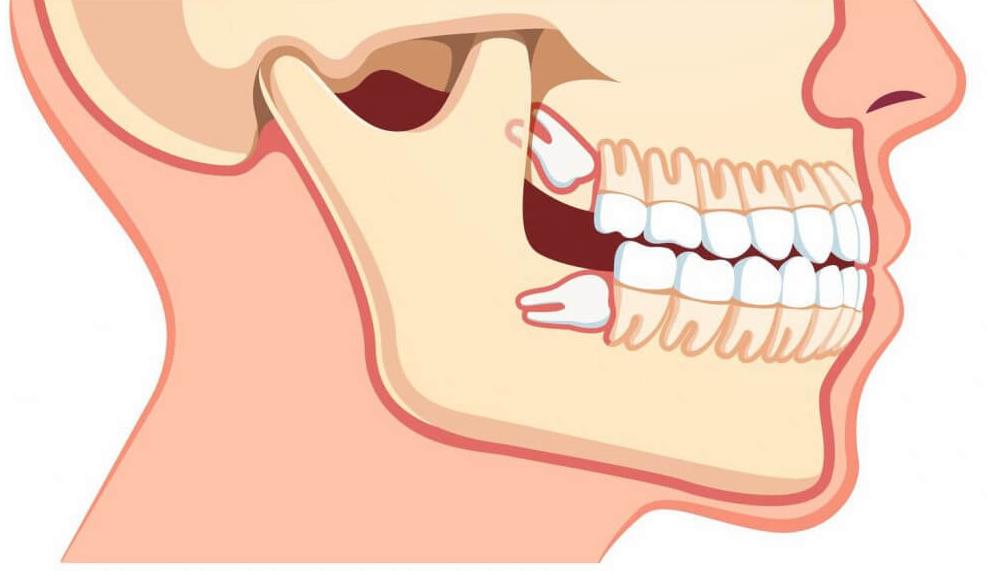
What problems can wisdom teeth cause?
The eruption of wisdom teeth can often be accompanied by a range of symptoms that disrupt daily life. Pain radiating towards the ear, swelling, difficulty opening the mouth, redness of the gums, and fever are common issues patients face. Due to their improper position, wisdom teeth can endanger neighboring teeth and the surrounding bone. They may tilt against adjacent teeth or remain entirely trapped within the jaw. Misalignment during wisdom teeth eruption often leads to food getting trapped under the gums, creating a breeding ground for bacteria and resulting in infection.
This causes the gum tissue to become swollen and red, and they are often bitten by the teeth from the opposite jaw, causing additional discomfort. Maintaining hygiene around wisdom teeth is also challenging, making them highly prone to cavities. Additionally, they can pose problems during orthodontic treatment by pushing neighboring teeth and creating a lack of space, which prevents the orthodontic appliance from “doing its job” and aligning the teeth into an ideal dental arch.
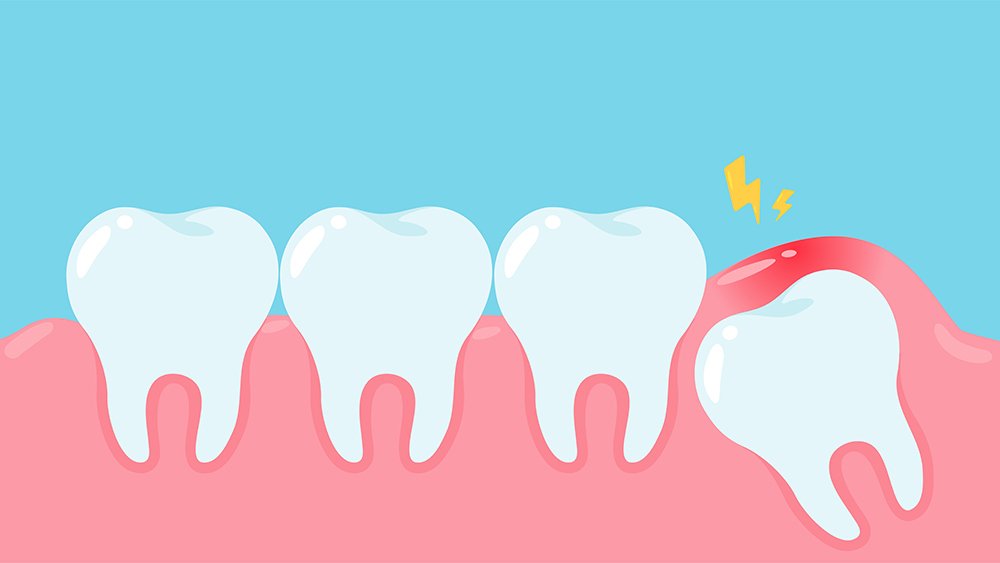
When do we recommend extracting wisdom teeth?
All the problems mentioned above—whether symptoms disrupting a patient’s daily quality of life or signs of negative effects on surrounding structures—can prompt your dentist to recommend wisdom tooth extraction. The procedure can be routine if the tooth has sufficiently erupted and can be removed via standard methods, or it can be surgically removed, which is the case when a great part of the tooth is placed inside the bone. It is performed under local anesthesia, so while the patient may feel pressure and the instrument movement, there’s no pain.
Depending on the type of the procedure, there may be a need for stitching the wound and placing sutures. Sutures usually dissolve on their own after a few days or are removed by your dentist.

What to expect afterward?
If your wisdom tooth was removed via a routine procedure, it’s advised not to rinse the wound for 24 hours to allow a blood clot to form. This helps the wound heal quickly and painlessly.
Recovery after surgical extraction is more complex. To ease the initial days after surgery, we recommend:
- The use of analgesics, or pain-relieving medications, to reduce potential pain.
- Applying cold compresses to prevent swelling or to help reduce any existing swelling as quickly as possible.
- Gently opening and closing your mouth to restore full jaw function.
- Eating soft foods and drinking plenty of fluids.
- Resuming normal oral hygiene on the second day post-procedure, being careful not to disturb the wound.
- Avoiding smoking for several hours post-procedure.
- Avoiding consumption of hard food until the wound has healed.
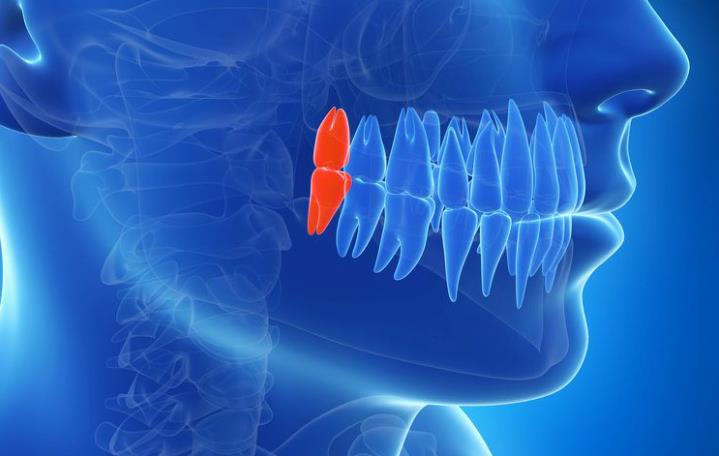
Post-procedure symptoms typically subside within three to seven days. If pain, swelling, or discomfort persists, consult your dentist.
Although we’ve aimed to address the most common questions our patients ask about wisdom teeth in this blog, there’s always more to say about this extensive topic! If you still have concerns about your wisdom teeth, feel free to consult our dentists. With a thorough examination and X-ray, we’ll determine the best solution for your specific case.










